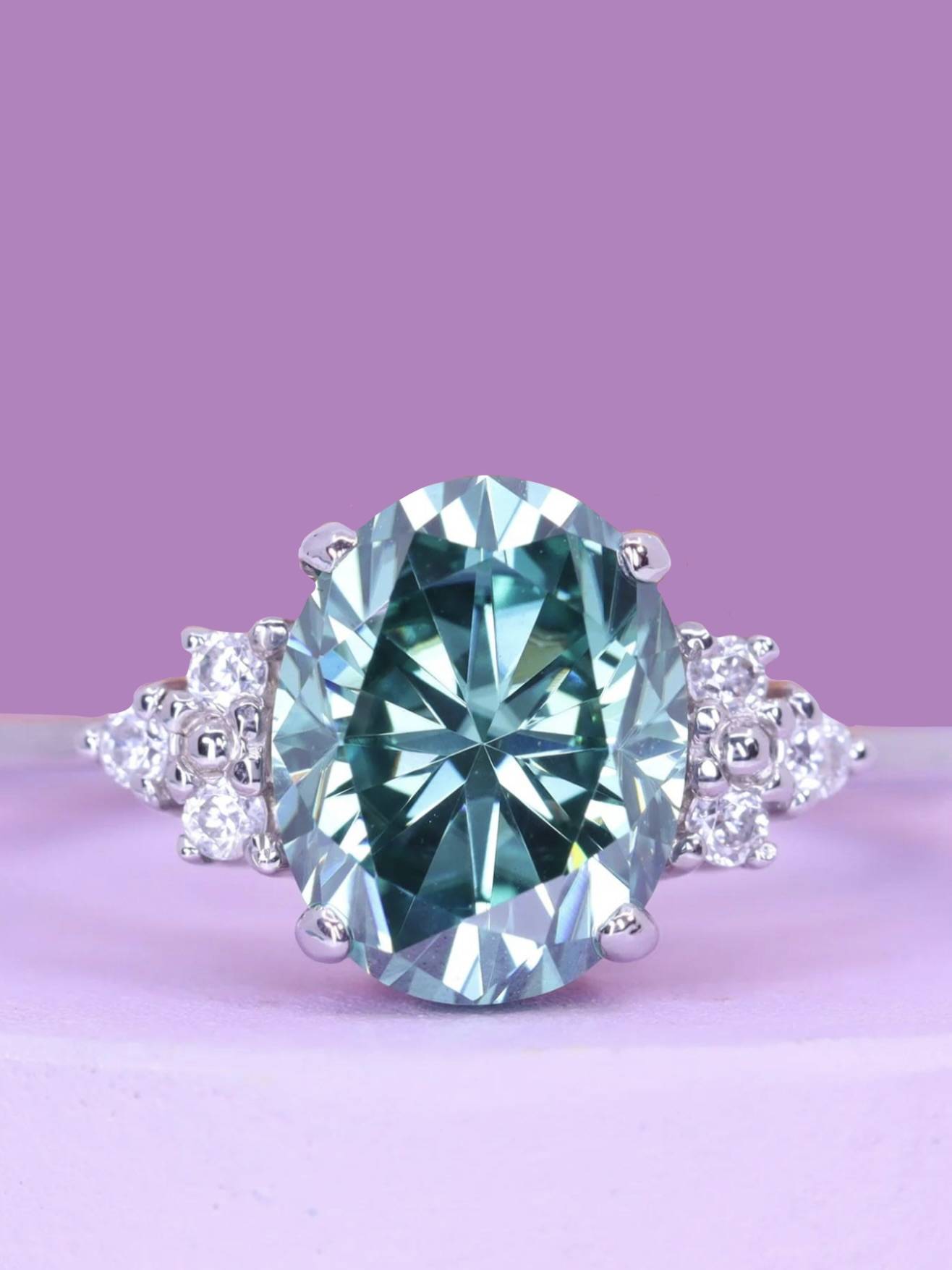GEMSTONE GUIDES
Moissanite
Gemstone Guide
Moissanite stands out as a leading alternative to traditional mined diamonds, offering the allure of luxurious engagement rings at a fraction of the cost. Let's explore the remarkable rise in popularity of this exquisite gemstone over recent years and how it has been touted as an excellent substitute for diamonds.
What is Moissanite
Moissanite is a type of gemstone discovered in 1893 by a French chemist named Henri Moissan. It's made from silicon carbide and is known for its sparkly appearance and durability, similar to diamonds. When they are white in colour they are often described as 'budget diamonds' or 'artificial diamonds' and many people choose moissanite for engagement rings and other jewellery because it's more affordable and doesn't involve the ethical concerns associated with diamond mining.
Moissanite Meaning
As a relatively newer gemstone compared to traditional diamonds, moissanite doesn't have a long history of symbolism. However, some people associate moissanite with attributes like resilience, brilliance, and ethical sourcing due to its mostly lab-created nature.
Shop Moissanite Collection
If you're looking for a piece of moissanite jewellery, take a look at our collection of engagement rings or get in touch with the team to create your very own moissanite dream.

Moissanite Value
Moissanite's value is influenced by factors such as its size, colour, and quality. Colourless or near-colourless moissanite stones are typically more valuable, as they closely resemble the appearance of high-quality diamonds. Additionally, larger stones and well-cut moissanites with minimal inclusions command higher prices.
The fact that moissanite is created in laboratories contributes to its relatively lower cost compared to stones such as natural diamonds or sapphires, making it an attractive and economical alternative for those seeking a brilliant and durable gemstone without the higher price tag associated with traditional diamonds.

Moissanite Hardness
Moissanite is renowned for its exceptional hardness, ranking at 9.25 on the Mohs scale of mineral hardness. This places it just below diamonds, which are the hardest known natural material with a perfect 10 rating. The impressive hardness of moissanite makes it highly resistant to scratching and abrasion, ensuring its durability for everyday wear in jewellery.
This gives moissanite a greater appeal as an attractive and durable alternative to diamonds, especially in settings like engagement rings where wear resistance is crucial.

Moissanite Rarity
Moissanite is very rarely found in its natural form, and is typically found only in minute quantities. The majority of moissanite used in jewellery is lab-created. Despite its scarcity in nature, the controlled production of moissanite in laboratories has made it a popular and accessible gemstone for consumers seeking a brilliant and durable alternative to diamonds.
Lab Grown Moissanite
The vast majority of moissanite is lab grown due to the fact that that its so rarely found in natural environments. Lab-grown moissanite, also called synthetic moissanite, is made in specialised labs where scientists mimic the conditions where moissanite naturally forms, creating gemstones with stunning sparkle, fire, and toughness, just like natural ones. Because the growth process is controlled, lab-grown moissanite has consistent quality and clarity, making it a great option for jewellery. It's ethical and sustainable since it avoids the environmental and ethical issues linked to traditional gemstone mining.
Where do Moissanites Come From?
Moissanite occurs naturally in minute quantities, primarily found in meteorites and certain rock formations. However, the vast majority of moissanite used in jewellery is lab-created. In specialised laboratories all over the world!
Moissanite was discovered in 1893 by French chemist Henri Moissan while examining rock samples from a meteor crater in Arizona, United States. He initially mistook the mineral for diamonds but later identified it as silicon carbide, naming it after himself.
Moissanite Ring Inspiration
Moissanite Colours
Moissanite is known for its impressive range of colours. From icy whites and brilliant yellows to rich greens and blues, moissanite's spectrum of colour allows individuals to express their unique style and preferences when selecting jewellery. Whether opting for a classic colourless stone or a vibrant coloured moissanite, each gem exhibits the stone's signature brilliance and fire, adding a touch of personality and elegance to any piece of jewellery.

Caring for Your Moissanite
It's essential to clean moissanite regularly, just as with any piece of jewellery. But don't worry, all you need to keep your moissanite jewellery clean and sparkly is some warm soapy water which you can use to gently scrub the gemstone with a soft toothbrush (a baby toothbrush works fine).
Always avoid harsh chemicals when cleaning your jewellery, no matter what the gemstone. Another way to care for your moissanite jewellery is to make sure you store it separately to your other pieces to avoid scratches. Moissanite is a pretty hardy gemstone but it still needs to be looked after with care to ensure it lasts a lifetime.
If you think your jewellery needs a refresh by a professional, book in for our repair and refresh service.
In the Jessica Flinn Showroom
At Jessica Flinn, we pride ourselves on creating a friendly atmosphere where all are welcome. If you book an in person appointment with us you will be welcomed into our beautiful showroom with a beverage of your choice, whether its a cup of coffee or a glass of champagne, we're here to make your appointment as memorable as possible. One of our experts will then guide you through the ring choosing or designing journey and make sure you leave with a ring you absolutely adore!
Book an appointment today and start your journey.





